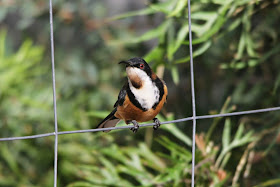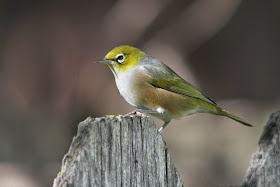The birding link?
Well, this year's Grand Final combatants are the Sydney "Swans" and the Hawthorn "Hawks". The birder in me wanted to understand a little more about the choice of team mascot and logo design for these clubs. Would I be satisfied that they have a worthy connection with Australian birds? If not, why not?
(If you have 5 minutes you can watch the highlights from the classic 2012 Grand Final also played between the Hawks and Swans....)
Well, this year's Grand Final combatants are the Sydney "Swans" and the Hawthorn "Hawks". The birder in me wanted to understand a little more about the choice of team mascot and logo design for these clubs. Would I be satisfied that they have a worthy connection with Australian birds? If not, why not?
(If you have 5 minutes you can watch the highlights from the classic 2012 Grand Final also played between the Hawks and Swans....)
We'll start with the Sydney Swans. The Swans were originally the Victorian-based South Melbourne Football Club. The club was transferred to Sydney in 1982 as the League was trying to expand to become a national competition. South Melbourne was originally founded in 1874. They played with a red and white jumper (red sash on white) and were known as "The Bloods".
It was not until the 1930s that the name "The Swans" came about. A journalist (Hec de Lacy) referred to the club as The Swans in articles written having a dig at an influx of Western Australian players at the time (the state of Western Australia has always featured Australia's Black Swan on its flag and coat of arms).
 |
| Black Swan, Cygnus atratus, Lake Wendouree, Ballarat, Vic |
| South Melbourne Football Club (1930s) |
Why white swans and not black then? The club's home ground (Lake Oval) was at Albert Park Lake which was home to some introduced white swans. This fact as well as the prominent white background in the team colours meant that the Black swan was overlooked when designing logos! A Wikipedia article says that the "Feral white swans were removed from the park between the 1980s and 1990s".
Here's a few of my favourite shots of Australia's Black swan!
 |
| Deen Maar, Victoria |
 |
| Cygnets aboard, Swan Lake, Phillip Island |
 |
| Keeping an eye on the raptors, Fisher's Wetland, Phillip Island |
 |
| Not so graceful when landing |
 |
| Bruny Island |
 |
| Black swans among the godwits and oystercatchers at Observation Point, Phillip Island |
The Hawthorn football club was nick-named the Mayblooms after a plant that apparently flowered profusely in the local area. A transformation followed a newspaper report of a pre-match address at which the coach Roy Cazaly urged the players to play like hawks.
My Australian Bird Names book (Fraser & Gray) says of the name:
"Hawk, from the old english hafoc, just meant any raptorial bird. it is still used today with much imprecision."When logos arrived in 1977 the initial design featured a fairly non-specific raptor in flight.
I am pleased to say that the modern logo happens to strike a semblance with that pair of the most "hawkish" of Australian raptors - the Brown Goshawk and Collared Sparrowhawk. This is no doubt due to that piercing eye. The designers (Cato Purnell Partners) said of their creation:
"A modern integrated logotype combined with a sharply drawn, predatory hawk and a modern take on a traditional shield, forms the club's new brand."
Again the colours aren't true to any Australian bird but there's not much you can do when your team's colours are brown and gold (immature Brown goshawks get pretty close)!
Collared sparrowhawk or Brown goshawk? Due to only occasional exposure to these birds I have little confidence when differentiating between the two. I have read the guides and studied my photos but have very little confidence in the field. Any tips on the shots below greatly appreciated!
 |
| This bird just appeared at our powered site at Cable Beach Caravan Park in Broome! It's bulk and eyebrow had me tending towards Brown goshawk |
 |
| I was looking for arty in this distant shot - again I was leaning towards Brown goshawk, Summerlands Peninsula, Phillip Island |
 |
| Cropped view (click for larger) |
 |
| My local experts were leaning towards Collared sparrowhawk, Alice Springs |
 |
| No idea! Attempt at an ID shot through foliage #1. Hulls Road Wetlands, Lilydale, Vic |
 |
| No idea! Attempt at an ID shot through foliage #2. A Silverleaves garden, Phillip Island - again click for a larger view |
Sharing with Wild Bird Wednesday
May the best team bird win!
Bird on!





































